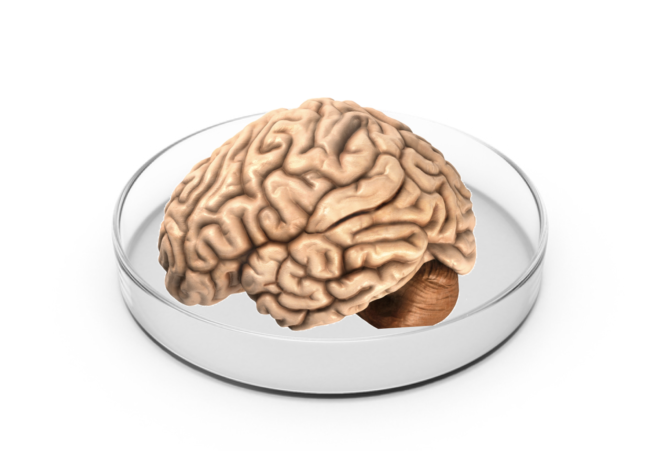Human brain organoids are human brain cells derived from stem cells and grown in 3-D. How much like a real brain are they?
Much of cellular neuroscience has focused on studying rat and mouse cells in the hope that this will translate over to humans. The choice of species is because studying the behavior of cells and tissue typically requires that you must access this tissue from the living organism either through invasive surgery or through an extraction that requires sacrifice of the organism. You can’t exactly drill holes in human skulls or scoop out pieces of brain to study from living humans (except in disease warranted brain surgery). And even if all people left their bodies to science after death, well, they are dead, and so is the brain tissue. Therefore, rodents. On the other hand, human brain cells, more than any other mammalian cell type, are pretty different on various dimensions from those in rodents, starting with gene expression. This makes for a challenge when trying to infer things about the human brain based on rodent studies. How then can one study human brain cells? In the last decade stem cell technology has made considerable advances, now allowing human brain cells to be developed in a dish out of stem cells, forming small 3-D structures. [Some of] these 3-D structures are called human brain organoids.
see related post From Mouse Brain to Human Brain
From stem cells to brain cells

introducing a cocktail of genes, mainly transcription factors. This process is not perfect and there are issues with the efficiency of this reprogramming process, but the cells have a lot of similarities to embryonic stem cells. Once they are reprogrammed into iPSCs they can then be induced with a bunch of externally applied growth factors to turn into brain cells.
Now, obviously there are a whole lot of variables along the way that need to be optimized such as which reprogramming cocktails create the best iPSCs and which factors do the best job inducing these iPSCs to turn into brain cells but over all this process has been steadily progressing over the last decade.
From brain cells to organoids
What distinguishes human organoids from plain old human iPSC brain cell cultures? Cultures are typically cells grown in 2-D on a plate or flat surface. First, human organoids are 3-D. Folks have come up with all sorts of ways of constructing 3-D – on chips and into spherical masses in specific 3-D matrices, but not all 3-D structures are considered organoids either. Rather organoids have to meet some basic criteria of resembling the components of an early fetal brain and just leaving the cells suspended in a clump in a spinning bioreactor seems to do the job. They spontaneously differentiate into a whole bunch of brain cell types and self-organize into something that is sort-of, kind-of, like a fetal brain. Other methods try to create sets of specific cell types in separate clumps (e.g. particular types of neurons and glia) and cobble them together into what a fetal brain might look like. Roughly, if they are 3-D and have enough cell types as determined by some markers, they are called ‘organoids’.
see related post Brain in a Dish
From organoids to brains
How much like a real brain is an organoid? As of now, the answer is not much. First, organoids are tiny – just a few millimeters across. In volume that’s many thousand times smaller than a human brain, and size matters. Without vasculature and blood flow they rely on diffusion of the fluid medium in which they are suspended for oxygen and nutrient availability. This means the cells on the inside have a hard time getting what they need and can easily starve and die, the bigger the organoid the more this risk of cell death in the interior. Second, the cells are similar to human brain cells, but how similar or different is not yet fully understood – they have human DNA but with a different programming path due to a whole different environment. Rodent brain cells are also similar to human brain cells but not exactly (and therefore still very different), except in very different ways – the DNA is rodent DNA. This means that human organoids offer a very different perspective, one that may help understand developmental disorders in humans. It is also important to remember that as a technique this is only a decade old and new advances can come quickly. Will it someday be possible to grow a human brain in a lab? It might be.
References
Fernandes, I.R. et al., Fibroblast sources: Where can we get them? Cytotechnology. 2016 Mar; 68(2): 223–228.



















Glad to find a balanced and real perspective on these kinds of interesting advances that aren’t just big hype like much of science reporting today. It is usually the hope that is hyped and the messy reality of challenges that is overlooked. What will eventually be done with these organoids? Is the goal to simply to build a brain in the lab?